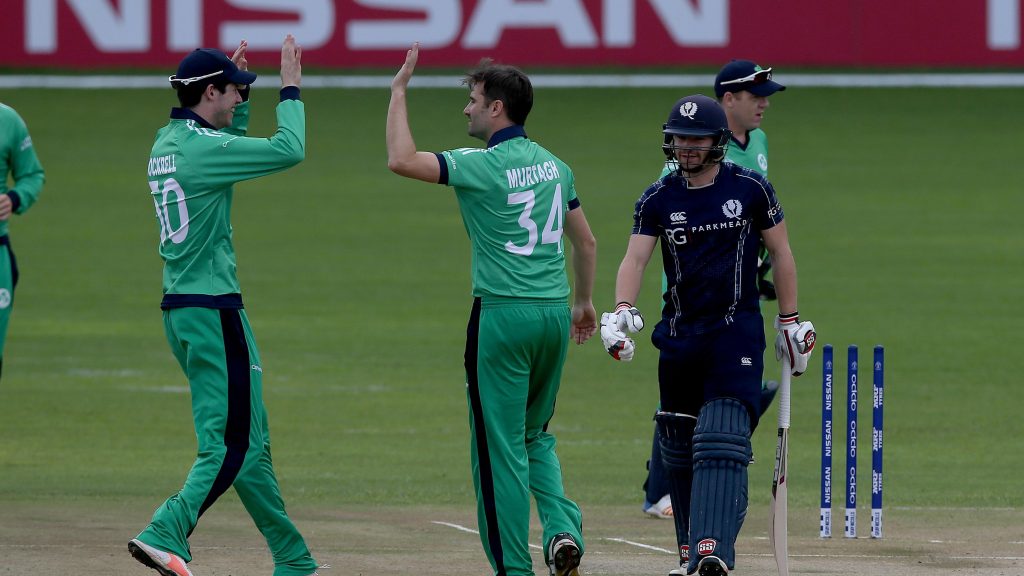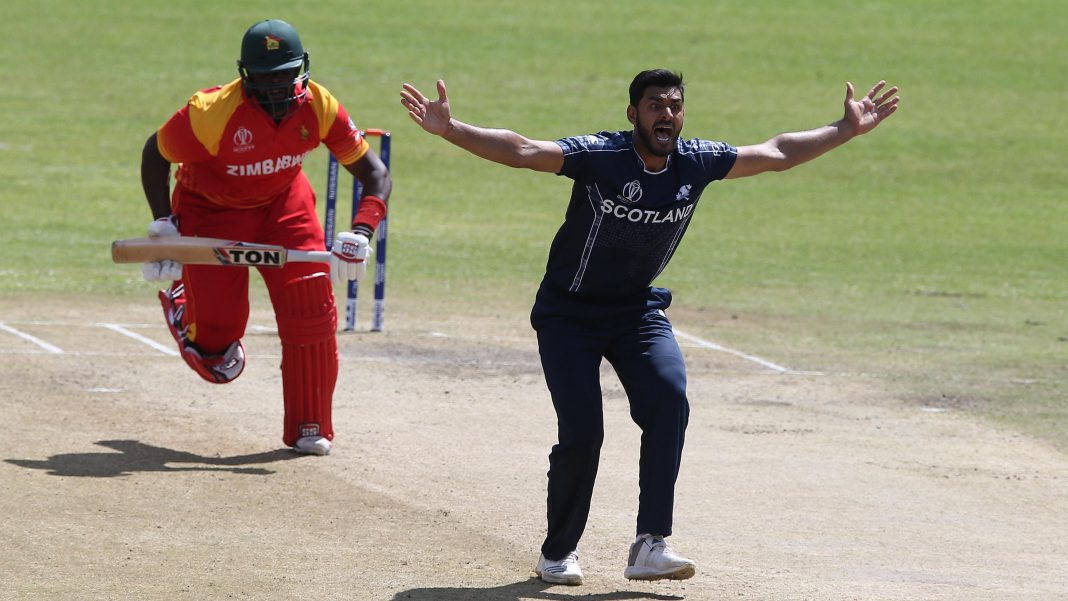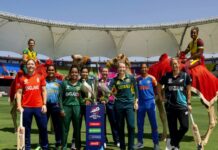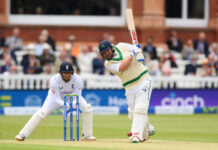‘All we’re really sayin’,’ sing the wonderful Irish duo the Duckworth Lewis Method, ‘is it doesn’t really feel / Like we’re all playin’ on a level playing field, / It’s not right, / It’s not cricket!’
The song’s horizons are much wider than the game itself, taking in Vladimir Putin, the GFC, and Lance Armstrong among other targets, but the point they’re making can also be taken as pointing to the fact that in cricket, too, the slope of the playing field is a good few degrees steeper than the legendary one at Lord’s.
It may not be how cricket is played (though that is a matter for debate after Sandpapergate and continuing cases of match-fixing), but it is unfortunately how it is governed.
Whether it’s the parsimonious doling-out of ICC resources to the lesser nations by those with the power and wealth, or the manipulation of tournament structures to the advantage of the Full Members, or the peremptory rejection of proposals for fairer and more transparent governance, or the systematic stripping away of the development programmes which, a decade ago, gave some hope that the playing field might one day be levelled, the whole tendency of the recent past has been to ensure that cricket remains the least equitable of major global sports.
There is another significant measure of the ICC Full Members’ commitment to the global development of the game, and that is their willingness – or otherwise – to play ODI matches against Associate countries who enjoy that status.
This has been a running sore for years, and a topic of repeated public complaints by captains like Peter Borren, Kyle Coetzer and William Porterfield.
How, they have legitimately asked, can their sides be expected to turn up at World Cups and compete with the Full Members when they have had no opportunity in the intervening years to hone their skills against the best?
Since half-a-dozen Associates were accorded ODI status in 2006 they have had greater opportunities to play against each other, in the World Cricket League, in bilateral series, and now in the ‘World Cup League 2’, but it has proved well-nigh impossible for most of them to persuade Full Members to play even a one-off match against them.
The following table sets outs the numbers of ODIs each Associates played against Full Members outside the framework of official tournaments:
Associates’ ODIs vs Full Members, 2006-19
| ODI status | No. of years | FM ODIs | Ave./year | |
| Ireland | 2006-17 | 12 | 44 | 3.67 |
| Afghanistan | 2009-17 | 9 | 27 | 3.00 |
| Kenya | 2006-14 | 9 | 22 | 2.44 |
| Scotland | 2006-19 | 14 | 20 | 1.43 |
| UAE | 2014-19 | 6 | 6 | 1.00 |
| Bermuda | 2006-09 | 4 | 4 | 1.00 |
| Netherlands | 2006-14 / 18-19 | 11 | 7 | 0.64 |
| Canada | 2006-14 | 9 | 4 | 0.44 |
| Hong Kong | 2014-19 | 6 | 0 | 0.00 |
| Namibia | 2018-19 | 2 | 0 | 0.00 |
| Nepal | 2018-19 | 2 | 0 | 0.00 |
| Oman | 2018-19 | 2 | 0 | 0.00 |
| Papua New Guinea | 2014-19 | 6 | 0 | 0.00 |
| USA | 2018-19 | 2 | 0 | 0.00 |
It can be no coincidence that Ireland and Afghanistan have recently been elevated to Full Member status: on the back of Ireland’s performance at the 2007 World Cup and their own determined development policy they were comparatively successful in arranging fixtures, while Afghanistan’s meteoric rise is one of the most extraordinary phenomena in the history of the game.
Ireland, too, were helped, as Scotland have been to a lesser extent, by the willingness of Full Members touring England to play a match or two against their Associate neighbours in the British Archipelago.
Once the happy occupants of the escalator to Full Membership, Kenya were also able to arrange series against the lower-ranked sides, notably Zimbabwe and Bangladesh, as well as a single two-match series against South Africa, before their sad decline saw them lose ODI status in 2014.

But for the rest it’s a miserable tale of isolation and neglect, perhaps exacerbated at times by the Associates’ own deficiencies of administration or ambition, but predominantly caused by the attitudes of the Full Members.
The full extent of the problem can be gauged if we reverse the previous table to look at the numbers of ODIs against Associates played by each of the Full Members, again, outside the framework of official tournaments:
Full Members’ ODIs vs. Associates, 2006-19
| ODIs vs. AMs | Opponents | |
| Zimbabwe | 51 | AFG 19, KEN 13, IRE 8, UAE 4, BER 2, NED 2, SCO 2, CAN 1 |
| Bangladesh | 21 | KEN 7, IRE 6, AFG 3, SCO 3, BER 1, NED 1 |
| West Indies | 12 | AFG 3, CAN 3, IRE 3, NED 1, SCO 1 |
| England | 11 | IRE 7, SCO 4 |
| Pakistan | 11 | IRE 6, SCO 4, AFG 1 |
| Sri Lanka | 10 | IRE 5, SCO 3, NED 2 |
| Australia | 7 | IRE 4, SCO 2, AFG 1 |
| South Africa | 5 | IRE 2, KEN 2, NED 1 |
| New Zealand | 3 | IRE 2, SCO 1 |
| India | 1 | IRE 1 |
Zimbabwe and Bangladesh, in other words, account for almost 55% of the ODIs played by Full Members against Associates over this 14-year period: these two countries have had difficulties of their own in picking up fixtures against their more illustrious peers and, perhaps more important, have been in search of rankings points against potentially weaker opponents.
But those circumstances apart, the pattern is undeniable: while Full Members may occasionally be persuaded to throw in a one-off game in Edinburgh, Dublin or Belfast in the course of an England tour, for the rest they have shown no interest whatsoever in helping the development of the game.
They have pleaded overpacked schedules; they have made the costs of hosting even a single ODI against a Full Member prohibitive for cash-strapped Associates. Such matches would interrupt the important business of filling the coffers with the income from profitable televised games, and besides, why take the risk of slipping on the banana-skin of a match against an unfashionable but highly-motivated opponent?
India’s recent record as a block to the development of the world game means that their ignominious position on that table should surprise no-one, but one might reasonably expect countries like New Zealand and South Africa to have stepped up a good deal more.
Evidently the concept of noblesse oblige is unknown in cricket’s corridors of power.
Could anything be done to repair this miserable picture? It would help if the ICC were to make its ‘development strategy’ more than just an empty slogan to be shoved into its glossy promotional material and then forgotten about.
Then there might be a chance of taking a modest step in the right direction, by writing in the Future Tours Program, for example, a requirement that every Full Member play one two- or three-match ODI series against an Associate in each calendar year, and that this be paid for either by the ICC or by Full Members themselves.
What’s that noise you hear? It’s the sound of hysterical laughter in Mumbai, Melbourne and Dubai at the very thought of such an outrageous and nonsensical suggestion.
And that, my friends, is why the future development of the game looks like a desolate, sharply-sloping wasteland.
Keep up with news and events happening in the emerging game through our Facebook and Twitter pages.
Looking for audio content on the emerging game? Add the Emerging Cricket Podcast to your favourites on Apple, Spotify and Podbean.
Want extra Emerging Cricket content? Contribute to the Emerging Cricket Patreon cause from as little as $2 a month. Sign up here!








I have given up. From the glory days of Zim and Kenya almost 20 years back to promising emergence of Ireland, Scotland, Netherlands and Namibia around the same time, I had been dreaming of atleast 15 countries getting full ODI membership. And a WC of atleast 16 teams, to be expanded every 8-12 years by a couple of teams. This was not a pipe dream, it was absolutely possible. However when things are controlled by India, and I am of Indian origin, there was no chance of any development. It was all about money. The sad part was Aus and Eng played along with BCCI. What was needed was, that the countries come together and tell BCCI that they actually make money on players outside of India.. IPL makes money because pf overseas players, if you dont believe, ask yourself, why do people not pour money into Vijay Hazare trophy, Indias T20 domestic championship? It is the glamour of IPL because of world participation. Same goes witb tests. India cannot play itself and make money. So someone has to raise the point that if 70% revenue comes from India, half of that is due to the fact that India can play other countries or have their players play IPL..and thus logically 50% share of that 70% belongs to overseas boards and players. It is not Indias. Lets see how much money makes if no one travels to India.